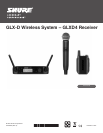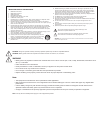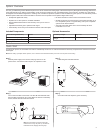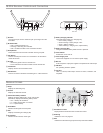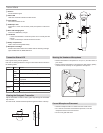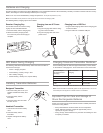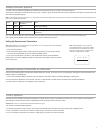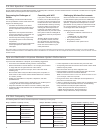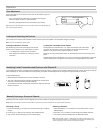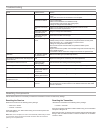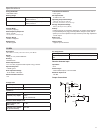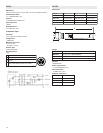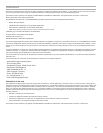
7
Multiple Receiver Systems
For ease of set up, available frequencies are divided into three groups based on the number of receivers supported.
All receivers in the system must be set to the same group. To select a group, determine the total number of receivers in the system (channel count), and
then select the appropriate group.
Note: To maximize the number of receivers on-air, Group 3 does not offer backup frequencies. Group 3 should only be used in controlled Wi-Fi environments to prevent inter-
ference from unexpected Wi-Fi devices.
Group Channel
Count
Backup Frequencies
Available?
Notes
1 Up to 4 Yes Initial Factory Setting.
2 Up to 5 Yes Best Group to use if you experience interference.
3 Up to 8 No Only use Group 3 in controlled Wi-Fi environments because there are no backup frequencies to avoid
interference.
Note: If you experience interference, reduce transmitter to receiver distance and set all GLX-D systems to group 2, which is the most robust wireless group.
See "Tips to Improve Wireless System Performance" section for additional information.
Manually Linking a Transmitter to a Receiver
Use the manual linking option to change the transmitter linked to a receiver. A common use for manual linking is changing the linked transmitter from a
bodypack type to a handheld type.
Setting Up Receivers and Transmitters
Note: Before beginning, turn off all receivers and transmitters. Turn on and set up each receiver/transmitter
pair individually to prevent cross-linking.
1. Turn on the first receiver.
2. Press and hold the group button to select a group (if necessary) or if the group is already
set, press the channel button to scan for the best available channel.
3. Turn on the first transmitter. The blue rf LED will illuminate when a link is established.
Repeat steps 1-3 for each additional receiver and transmitter. Remember to set each receiver
to the same group.
Combo Systems
A combo system is created by linking two transmitters to a single receiver. Only one transmitter can be active at a time to prevent cross interference.
Gain settings for each transmitter can be independently set and stored when the transmitter is active.
Important! Do not turn on and operate both linked transmitters at any time.
Turn off both transmitters before beginning.
1. Press the group button to select a group. The receiver automatically scans the selected group to find the best available channel.
2. Turn on transmitter 1 and link it to the receiver. Adjust the gain, and then turn off the transmitter.
3. Turn on transmitter 2 and link it to the receiver. Adjust the gain, and then turn off the transmitter.
1. Turn on the transmitter: Within 5 seconds, press and hold the LINK button until the transmitter LED begins to flash green.
2. Press and hold the link button on the receiver: The blue rf LED will flash, and then remain on when the link has been established.
3. Test the audio to verify the link and adjust the gain if necessary.
Note: Dashes appearing on the group and
channel display during a channel scan indicate
that frequencies are not available in the select-
ed group. Choose a group that supports more
receivers and repeat the set up steps.
group channel
-- --



